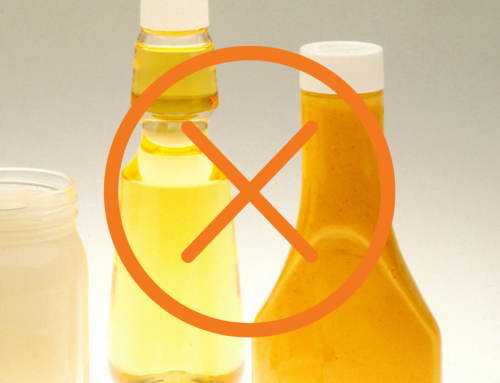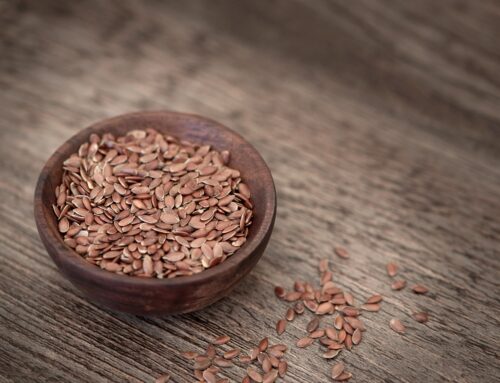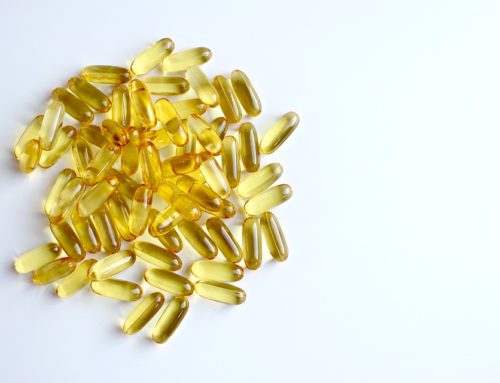Omega 3 and omega 6 from food: alpha linolenic acid and linoleic acid. How much do we need?
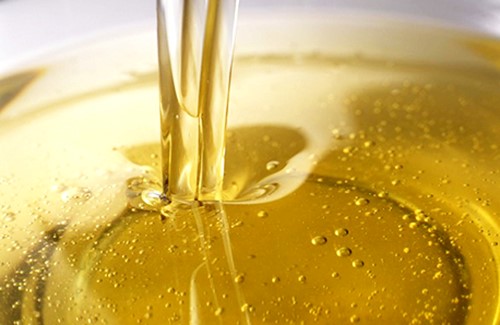 Our body cannot produce the two essential basic fatty acids alpha-linolenic acid ALA and linoleic acid LA itself. These are the basic fatty acids of the omega 3 and omega 6 fatty acids. Our body ingeniously produces all the fatty acids it needs from these two basic fatty acids. Condition: we have to provide our body with those two basic fatty acids from food. Only then can the body decide to which fatty acids it converts these only two essential basic fatty acids (for example to GLA, DHLA, AA, EPA, DHA).
Our body cannot produce the two essential basic fatty acids alpha-linolenic acid ALA and linoleic acid LA itself. These are the basic fatty acids of the omega 3 and omega 6 fatty acids. Our body ingeniously produces all the fatty acids it needs from these two basic fatty acids. Condition: we have to provide our body with those two basic fatty acids from food. Only then can the body decide to which fatty acids it converts these only two essential basic fatty acids (for example to GLA, DHLA, AA, EPA, DHA).
We also need to provide the body with sufficient protective substances from food. Absorption of omega 3 and omega 6 requires sufficient vitamin E and carotenes. These are the most important antioxidants that keep the omega 3 and omega 6 in top condition to do their job. Vitamin E is a family of eight types of toctopherols and toctotrienols, all of which are present in our diet.
But where do we find this balanced, unique composition of all eight types of vitamin E and a whole host of carotenes that the body needs to fight aging and with which it will defend itself against free radicals?
Supply your body with the basic fatty acids and your body makes all the other fatty acids it needs. Only alpha-linolenic acid (ALA) and linoleic acid (LA) are vital and cannot be produced by the body itself.
Omega-3: alpha linolenic acid (ALA)
Stock fatty acid: alpha-linolenic acid (ALA) > eicosatetraenoic acid > stearidonic acid > eicosatetraenoic acid > eicosapentaenoic acid (EPA) <-> clupanodonic acid <-> docosapentaenoic acid <-> docosahexaenoic acid (DHA) > etc… Stock fatty acid: alpha-linolenic acid (ALA) > eicosatrienoic acid > eicosatetraenoic acid
Omega-6: linoleic acid (LA)
Stock fatty acid: linoleic acid (LA) > gamma linolenic acid (GLA) (eg evening primrose oil) > dihomo gamma linolenic acid (DGLA) > arachidonic acid (AA) > adrenoic acid > docosapentaenoic acid > etc… Stock fatty acid: linoleic acid (LA) > eicosadienoic acid > eicosatrienoic acid
Omega-7 (with palmitic acid as a precursor): palmitoleic acid
Stock fatty acid: palmitoleic acid (PA) > stearic acid > palmitoleic acid > hexadecadienoic acid > octodecadienoic acid > octodecatrienoic acid (honey acid) > eicosatrienoic acid > etc… Stock fatty acid: palmitoleic acid (PA) > vaccenic acid
Omega-9 (precursor with stearic acid): oleic acid
Stock fatty acid: oleic acid (OA) > octadecadienoic acid > eicosadienoic acid > eicosatrienoic acid > docosatrienoic acid > etc… Stock fatty acid: oleic acid (OA) > eicosenoic acid > erucic acid
Eiscosapentaenoic acid (EPA) : essential for the production of prostaglandin 3 di-homo-gamma-linolenic acid: essential for the production of prostaglandin 1 arachidonic acid: essential for the production of prostaglandin 2
What is the correct ratio of omega 3 and omega 6?
Several authors and agencies provide recommendations on the omega-3/omega-6 ratio that the body needs.
| Omega 3 | Omega 6 | |
| Japan Society for Lipid Nutrition
J. Lipid Nutrition 1997 |
1 | 4 |
| Serge Renaud/ Lanzmann-Petithory
(univ. Paris / heart diet study of Lyon) |
1 | 3 to 5 |
| Udo Erasmus (3)
‘Vital fats, fatal fats’ |
1 | 3 |
| Patrick Holford (4)
‘The optimum nutrition bible’ |
1 | 2 |
| Atkins (5)
‘Anti-aging diet revolution’ |
1 | 2 |
| Ann Elling (6)
‘primordial diet’ |
1 | 2 |
| dr. Bob Arnot (11)
‘The breast cancer prevention diet’ |
1 | 4 |
| Mary Sole (7)
‘Facts about fats’ |
1 | 6 |
| Brenda Davis (8)
‘Becoming vegan’ |
1 | 2 to 4 |
| Stephen Walsh (94)
Plant Based Nutrition and Health |
1 | 3 to 4 |
| A. Simopoulos (9)
‘The omega plan’ |
1 | 4 |
| Bary Sears (33)
‘Anti-aging Zone’ |
1 | 4 |
| Bruce Fife (12)
‘Saturated fats may save your life’ |
1 | 7 |
| Superior Health Council of Belgium | 1 | 4 to 6 |
| WHO (World Health Organization) | 1 | 5 to 10 |
| NIH (National Institute of Health) | 1 | 3 |
| breast milk
Ann Elling (6) |
1 | 5 |
Conclusion: All experts agree: we need more omega 6 than omega 3. My advice: the ratio of omega 3 and omega 6 should be 1 to 3 to 5.
Do you eat enough omega 3 and omega 6? Need healthy food
Most of us eat breakfast cereals or sandwiches with cheese, meat spreads, jam or chocolate in the morning. Lunch usually also consists of sandwiches. In the evening, extensive meat or fish with potatoes and just a little vegetables is eaten.
There is too little omega 6 and omega 3 in this diet. Consequently, this diet does not provide the body with what it actually needs to remain vital.
Fat consumption and omega 3 and omega 6 in Europe (Europe is not America)
Europe is clearly not America when it comes to the use of fats. Firstly, because in relation to vegetable fats we eat significantly more animal fats than Americans and secondly, the omega-3/6 ratio in Europeans is much better than what some American authors and experts calculate for America.
The FAO (Food and Agriculture Organisation) clearly states: ‘In Europe, the availability of omega 3 and omega 6 is relatively low because the availability of animal fats is more than twice that of vegetable fats’ (15). It is therefore advisable for Europeans to supplement both omega 3 and omega 6. In addition, interpretations of the FAO figures and the figures for the proportions of omega 6 in 7 animal and vegetable foods show that specifically in Belgium and the Netherlands the ratio of omega 3 to omega 6 is approximately 1/2.7 and 1/4.2 respectively. That’s a pretty good ratio. But the proportion of omega 3 to omega 6 in the total amount of fats is too low and should be 30%. These figures also show that the average Belgian should take in some extra omega 3 and omega 6 to feed themselves optimally. Other fats from fried and processed products, such as cookies, should be reduced to stay (or become) slim and healthy. ‘Improving the quality of fats is recommended’ (3)
What evolution have animal and vegetable fats seen in Belgium and the Netherlands versus the US? The American has a different fat consumption than the European. In addition, every country in Europe has a different diet, including fats and oils. It is therefore unwise to copy American figures indiscriminately.
Fats in the USA and fat in the Benelux: animal fats and omega 3 and omega 6
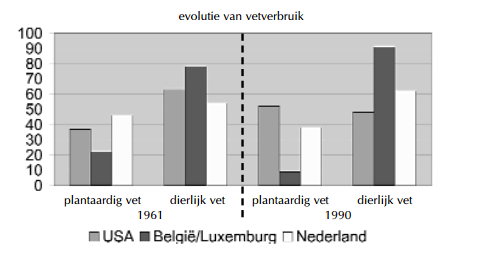
In Belgium, only 9% of our fats come from vegetable fats. No less than 91% comes from animal fats, such as butter, cheese, dairy, eggs, beef, pork and chicken fat, fish fat and to a significantly lesser extent duck, goose or turkey fat.
Percentage share of omega 3 and omega 6 in animal fats
| in % | Ω3 | 6 | Ω9 | saturated fat |
| Butter | 3 | 3 | 31 | 63 |
| Cheese Edam | 2 | 4 | 30 | 64 |
| Cheese cottage | – | – | 30 | 70 |
| Common egg | 1 | 13 | 52 | 34 |
| Skim milk | – | – | 25 | 75 |
| Full Milk | 2 | 4 | 30 | 64 |
| beef fat | 1 | 2 | 39 | 58 |
| pork fat | 1 | 10 | 34 | 55 |
| chicken fat | 2 | 25 | 37 | 36 |
| Fish | 21 | 10 | 40 | 29 |
| Average | 3,3% | 7,1% | 34,80,% | 54,8% |
| average ratio of omega-3/6 in animal fats: 1/2.2 |
Vegetable oil and the ratio of omega 3, omega 6 and omega 9
The 3 most sold vegetable oils in the world in 2002: 69% of the consumption of all vegetable oil in the world is soya, palm and rapeseed oil.
| Ω3/6 | Ω3 | 6 | Ω9 | Saturated fat | ||
| in 1000 tons | Ratio | % | % | % | % | |
| Soya oil | 29.500 | 1/7 | 7 | 51 | 27 | 15 |
| Palm oil | 23.750 | – | 0 | 9 | 39 | 52 |
| Rapeseed | 13.570 | 1/3 | 7 | 23 | 61 | 9 |
| Weighted average | 1/ 6,8 | 4,53 | 30,38 | 38,17 | 26,92 |
Staessen published in 1998 that in Belgium the ratio of omega 3 to omega 6 is approximately 1/7.5 (99). What does this mean for Belgians and Dutchmen? Average Fatty Acid Consumption
| consumption | Ω3/6 | Ω3 | 6 | Ω9 | Saturated fat |
| Belgium | 1/ 2,7 | 3,41% | 9,19% | 35,11% | 52,29% |
| The Netherlands | 1/ 4,2 | 3,77% | 15,94% | 36,07% | 44,22% |
Let’s assume that the actual omega-3/6 ratio in B and NL is between 1/2.7, 1/4.2 and 1/7.5, so on average 1/4.8. Then you are perfectly helped with an omega-3/6 that gives you a ratio of 1/2. Because the ratio we have (1/4.8) + the supplement (1/2) gives 2/6.8 or 1/3.4. That’s ideal. The Japanese Society for Lipid Nutrition also recommends an oil with a ratio of 1/2 or less.
Too many unhealthy fats, not enough healthy omega 3 and omega 6
Almost all fats that we absorb from cookies, chips, chips, bars, sweets, margarines, veggie burgers and other processed products are of disturbing quality. Most have been fractionated, deodorized, degummed, refined, heated and industrially heavily processed so that hardly any vegetable protective substances remain in the oil. In addition, some fats or oils are completely or partially hardened (hydrogenated), resulting in trans fats. Those are the most harmful fats for our body. These oils disrupt the proper functioning and conversion of healthy fatty acids. And this is where the shoe pinches.
Ann Gittleman writes in her book ‘Eat fat and lose weight’: ‘We eat too many unhealthy fats and too much commercially raped omega 6’. Bestselling author Patrick Holford also states in his book ‘The Optimal Nutrition Bible’: ‘Most people have omega-3/6 deficiencies because they eat unhealthy fats.’
Unhealthy fats prevent healthy fats from doing their job. The message is clear: more healthy fats and less unhealthy fats.
Which nutrients are rich sources of omega 3, omega 6 and omega 9?
Sources of omega 3 in food:
linseed (flaxseed), hemp seeds, pumpkin seeds, soy, rapeseed, wheat germ, walnuts, dark green leafy vegetables and fatty fish.
Sources of omega 6 in food:
evening primrose, safflower, pine nuts, sunflower seeds, hemp seeds, walnuts, soya, wheat germ, pumpkin seeds, sesame seeds, beechnuts, peanut, rapeseed
Sources of omega 9 in food:
almond nut, olives and olive oil, macadamia nut, avocado, cashew nut, bitter nut, pistachio nut, pecan nut, walnut, rapeseed and rapeseed, peanut, Brazil nut, cocoa butter, palm oil, fatty fish
Conclusion: Europeans (Belgians and Dutch) eat too little complete and vital omega 3 and omega 6 in proportion to the other fats they eat. We must consciously add healthy omega-3/6 to our daily diet. We would also do well to reduce the total fat content and certainly the unhealthy fats in our diet.
How much omega 3 and omega 6 do we need at least?
| at 2000 cal | Ω3 in % | Ω6 in % | Ω3 in g | Ω6 in g |
| Brenda Davis (19) | 1-2% | 3-5% | 2-4g | 6-10g |
| Mary Sole (20) | 05-1,5% | 2-3% | 1-3g | 4-6g |
| Udo Erasmus (21) | 2% | 3-6% | 4g | 6-12g |
| dr. Atkins (22) | 1-1,5% | 2-3% | 2-3g | 4-6g |
| NIH | 1% | 2-3% | 2g | 4-8g |
| Belgian food council (23) | 0,50% | 2,50% | 1g | 5g |
| Average min. desired | 1 to 1.5% | 2-4% | 2-3g | 4-8g |
| Desired ideal | 1.5 to 2% | 4 to 8% | 3 to 4g | 9 to 16g |
Every human being, whether baby, child, adult or elder, needs a minimum of omega-3/6. Of course each in different quantities. Babies and small children need proportionately more omega-3/6 than adults. And the less fats you eat, the more omega-3/6 you have to absorb in proportion. The higher in fat you eat, the less omega-3/6 you should absorb in proportion. Therapeutically, an increased amount can be taken temporarily.
With omega-3/6 the saying “more is better” does not apply. With omega 3 and omega 6 the saying is “too little is very bad” and “enough is enough”. An excess of omega-3/6 can be harmful due to the oxidative stress. This means that the body must constantly protect these fatty acids against free radicals.
Other oils and fats that you can consume to your heart’s content are extra virgin olive oil and vegetable saturated fatty acids such as extra virgin coconut oil and red palm oil.
A correct dose of omega 3 and omega 6 is important for your health
Because too much omega 3 and too little omega 6 is just as bad as vice versa, namely too much omega 6 and too little omega 3.
Bruce Fife: ‘Too much omega 3 leads to the overproduction of PGE 3, which thins the blood too much and prevents blood from clotting properly, 13 which can be dangerous in the event of an accident. It can also cause spontaneous bleeding and make it impossible for the body to respond properly to a wound or infection’ (24). ‘Due to the overconsumption of omega 3, brain haemorrhages are the main cause of death among Eskimos’ (25). Finally, Udo Erasmus says in his book ‘Vital fats and fatal fats’: ‘Using only linseed oil for a long time can cause an omega-6 deficiency’.
Andrew Weil states: ‘What we know is that both omega 3 and omega 6 are vital.’ (10) ‘Both omegas should be taken in combination’, states the ‘Nutrition Almanac’ on p. 22. (13)

